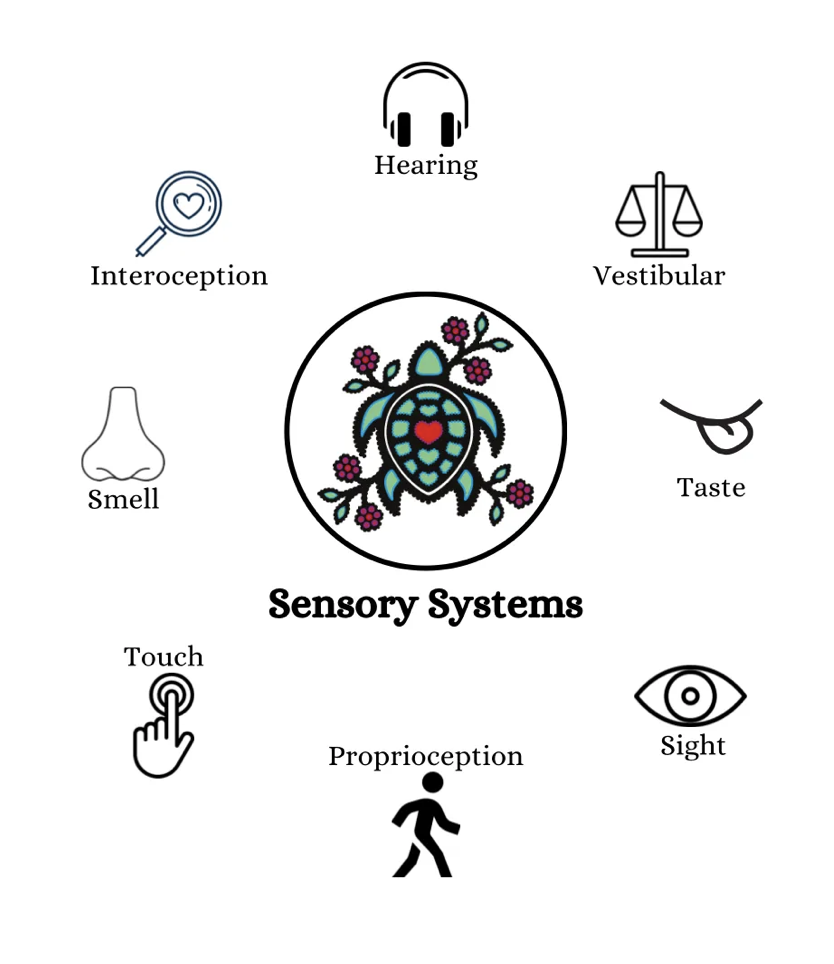Interoception and the Nervous System
Miskihnak Occupational Therapy teaches nervous system regulation through beadwork. If you have ever beaded before, you probably have already experienced the therapeutic powers this art form holds. Nervous system regulation is a balance and connection in all aspects of our being - physical, mental, emotional and spiritual. To regulate, we need to connect with and form a deep relationship with self to know who we are, what we came on this Earth to experience and what our needs are.
Interoception is a part of the sensory system. It is a sense - just like sight, smell, taste, touch. Interoception is what enables us to feel the inside of our body. It can be thought of as connecting to our internal experience. When we tune into the messages our body is sending us - we are able to identify how we feel. Noticing our body sensations and then connecting them to an emotion is how we know how we feel. We have both affective and homeostatic emotions. Affective emotions involve our moods and include contentment, love, joy, gratitude, frustration and ager. Homeostatic emotions involve our basic body needs such as hunger, thirst, itchiness, nausea, sleepiness, and sensory overwhelm.
When we are able to feel and identify the body sensations that our interoception is sensing and then connecting these sensations to an emotion is called interoceptive awareness. An example of this is if I am feeling an openness in my chest, a lightness in my shoulders I might connect these feelings with the emotion of relaxation and relief.
As the saying goes if you don’t use it, you lose it. For many people, myself included - the interoceptive sense was lying dormant for many years. The consequences of not connecting to one’s internal experience are vast - and can include the following:
cognitively knowing coping strategies such as breathing techniques and meditation but not knowing when to use them
unable to identify what emotions and what they mean
Feeling upset and not knowing why
difficulty with nervous system regulation
Binge eating
Not feeling hungry even though not eating any food
Overexertion beyond the point of exhaustion
Having a difficult time figuring out how to calm down
There are many reasons why someone would have difficulty with interoception - they include: autism, trauma, depression, ADHD, eating disorders, OCD, anxiety, chronic pain, and addiction. Gabor Mate’s definition of trauma highlights the impact on our interoceptive sense.
Trauma is not what happens to you; it is what happens inside you as a result of what happens to you
-Dr. Gabor Maté
If someone experiences a traumatic event, the wound is what happens inside of the body. Whether that wound be physical, emotional, mental or spiritual, as a coping mechanism, our body intelligently will begin to disconnect from the interoceptive sense. The physical sensations in our body become too painful, and to cope we stop feeling them. This comes at a cost - and the cost is the connection to ourselves.
The thought of feeling our most painful experiences can be terrifying. The desire to take initiative to heal takes sooo much courage, discipline and a deep love for yourself. By taking the courageous act of feeling the most painful emotions, it makes room in your body to also feel the most glorious of emotions such as bliss. The Beadwork is Medicine program is a gentle way to slowly guide yourself into healing, and showing yourself that you are able to create a beautiful life from the inside out.


